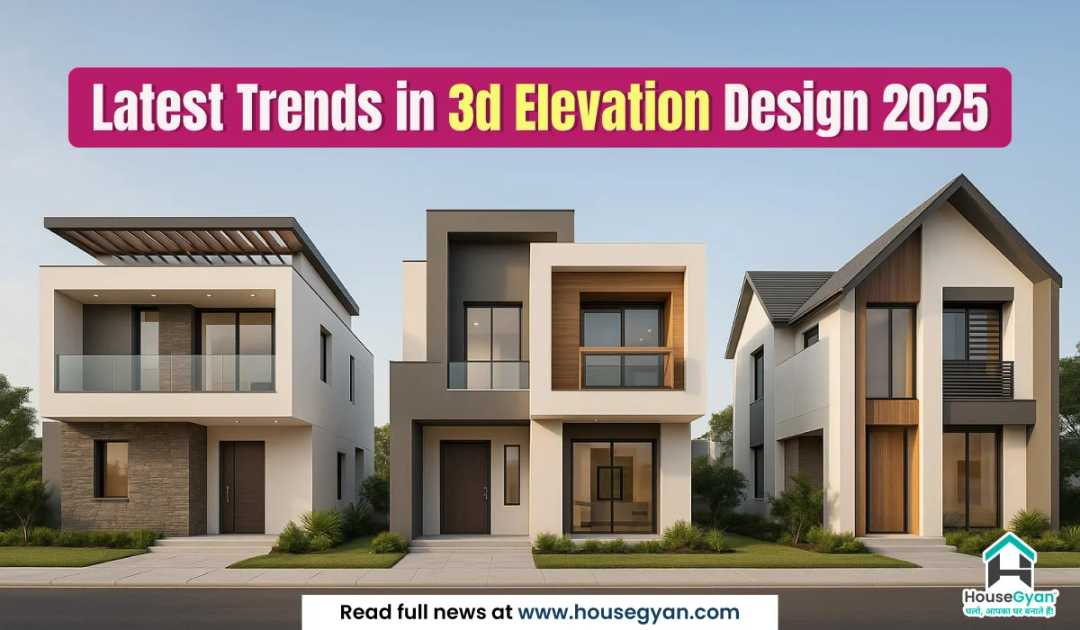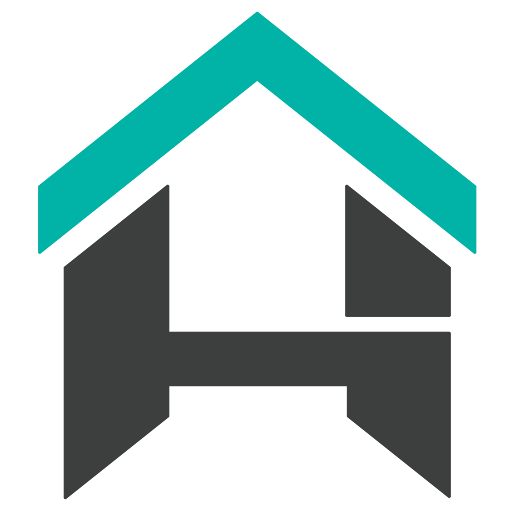
8th, Jul, 2025
Exploring the Latest Trends in 3D Elevation Designs for Indian Homes 2025
Looking for the latest 3D elevation design ideas for your dream home? Here's everything you need to know before choosing a perfect 3D front elevation for your house!
What is 3D Elevation Design?
A 3D elevation design is a realistic 3D model or visual representation of how your house will look from the outside. It shows the front view (or sometimes side and rear) of your house in a computer-generated 3D format with textures, colours, lighting, shadows, and materials – giving you a real-life glimpse before actual construction.
It helps you:
Visualize your house before building it
Choose colour combinations, exterior materials
Plan design upgrades (balconies, railings, textures)
Make informed decisions and avoid costly mistakes
Why is 3D Elevation Design Important?
Many homeowners in India now prefer 3D elevation house designs to plan better and create a beautiful first impression. Here's why:
Better Visualization: You see your house before it’s built
Architectural Clarity: Elevation helps clarify structural elements like roof, doors, windows, and balconies
Cost Estimation: Helps in estimating exterior finishes cost like cladding, paint, tiles, etc.
Style Matching: You can align design with your dream look – modern, traditional, luxury, or minimalist
Different Types of 3D Elevation Designs
Modern Contemporary: Characterized by clean lines, minimalistic features, and the use of modern materials like glass and steel.
Traditional: Reflects historical architectural styles with intricate detailing, pitched roofs, and classical elements.
Rustic: Emphasizes natural materials such as wood and stone, blending harmoniously with the environment.
Futuristic: Incorporates innovative shapes, dynamic forms, and advanced materials to create a forward-looking aesthetic.
Each type of design caters to different architectural preferences and styles, offering versatility in creating buildings that reflect unique personalities and functional needs.
Read More: Ground Floor Normal House Front Elevation Designs
Latest 3D Elevation Design Trends in India (2025)
Here are the most popular and trending 3D house elevation ideas being used in India in 2025:
1. Modern Front Elevation Designs
Clean lines, flat roofs, and large glass windows
Neutral tones like grey, white, and beige
Floating balconies and minimal grillwork
2. Double Floor Elevation Designs
Ideal for G+1 houses
Include decorative railings, stone cladding, and modern facade lighting
Great for 3BHK and duplex homes
3. Single Floor Elevation Designs
Compact, low-cost, and perfect for small families
Use modern tiles, wide entrance, and porch design
Elevation with parking space is trending
4. 3D Elevation with Brick & Stone Cladding
Red brick and granite-style stone designs are popular
Give a rustic yet premium appeal to the front look
Maintenance-free and long-lasting
5. Glass & Wood Mixed Elevation
Glass railings with wooden textures look elegant
Used in luxury homes and villas
Enhances modernity and natural aesthetics
6. South Indian Style Elevation
Heavy use of traditional arches, columns, and tiled roofs
Popular in Tamil Nadu, Andhra Pradesh, Kerala
Combination of classic and contemporary
7. Contemporary Balcony Front Elevation
Stylish iron railings, box balconies, and hidden lighting
Balcony design plays a central role in 3D elevation trends
8. 3D Bungalow Elevation Design
Large porch, tall windows, and sloped roofs
Premium paint texture and tile cladding used in front
Based on House Type – Choose Your 3D Elevation Design
Read More: Front Elevation Designs For Small Houses When designing a 3D elevation for your house, focus on these trending exterior elements: Front Gate Design: Modern CNC cut or MS gates Balcony Grills: Glass or horizontal bar railing Roof Styling: Flat, slope, or pergola roof styles Lighting: Hidden LED strip lights and lanterns Tiles and Texture: Wall cladding tiles and exterior paint finishes Windows & Shutters: Black framed glass or modern swing shutters Plot Size (length × width) Number of floors (G+1, G+2, G+3) Facing direction (North, East, West, South) Budget for exterior materials (paint, cladding, glass) Local climate – select materials that suit your region At HouseGyan, you can get: Custom elevation design for any plot size Expert architectural support for house planning Affordable pricing for all budgets (starting from ₹2499) Related Services: Ground Floor 3D Elevation Design Double Floor 3D Elevation Plan Single Floor House Front Design Recent technological advancements have significantly enhanced the creation and presentation of 3D elevation designs: Building Information Modeling (BIM): BIM software allows for the creation of detailed 3D models that integrate architectural, structural, and MEP (Mechanical, Electrical, Plumbing) elements, promoting coordination and collaboration among project stakeholders. Virtual Reality (VR) and Augmented Reality (AR): VR and AR technologies enable immersive experiences where clients can virtually walk through and interact with 3D models, providing a deeper understanding of spatial relationships and design concepts. Real-Time Rendering: Real-time rendering techniques produce high-quality visualizations with realistic lighting, textures, and shadows, offering a lifelike representation of the proposed building. Sustainable Materials: Increasing emphasis on eco-friendly materials like recycled steel, bamboo, and energy-efficient glass to reduce environmental impact and promote sustainability. Integration of Nature: Incorporation of green spaces, vertical gardens, and large windows to enhance natural lighting and indoor-outdoor connectivity. Smart Features: Integration of smart home technologies for energy management, security systems, and convenience, catering to the growing demand for interconnected living spaces. Unique Architectural Elements: Experimentation with innovative shapes, cantilevered structures, and asymmetrical designs to create visually striking and functionally efficient buildings. Ans: It starts from ₹2,499 and can go up to ₹9,999 depending on plot size and customization. Ans: Yes, at HouseGyan you can get customized 3D elevation designs for any plot size. Ans: No, elevation shows only the outer view. For full house planning, architectural services are required. In conclusion, 3D exterior designs are not just visual representations but integral tools in modern architecture and construction. They facilitate effective communication, streamline design processes, and contribute to the creation of sustainable, aesthetically pleasing, and technologically advanced buildings. As technology continues to evolve, the capabilities of 3D Front elevation designs will expand, offering architects and designers new opportunities to innovate and transform the built environment. Whether you're planning a contemporary urban residence, a rustic countryside retreat, or a futuristic commercial complex, 3D elevation designs empower you to envision and realize architectural visions with precision and creativity. 3D elevation design is more than just a visual—it’s a smart planning tool for your dream home. Whether you're building a single-floor house, duplex, or bungalow, choosing the latest modern 3D front elevation design will add style, value, and uniqueness to your space. Looking for a modern, traditional, or budget-friendly elevation plan? HouseGyan can help you get the best 3D elevation design as per your need and budget!Popular Exterior Elements in 3D Elevation
Things to Keep in Mind While Choosing 3D Elevation Design
Custom 3D Elevation Design with HouseGyan
Technology in 3D Elevation
Elements of Modern 3D Front Elevation House Designs
Frequently Asked Questions (FAQ)
Q1. What is the cost of a 3D front elevation design in India?
Q2. Can I get a 3D elevation for a 20x30 plot?
Q3. Does elevation design include interior planning?
Final Words
House Gyan all services
Loading...HouseGyan is your trusted platform for everything related to home design, construction, and planning. We offer a complete range of services to help you build your dream home with ease and confidence.
Our Services
- Price Calculators: Plan your budget with our tools like Home Loan EMI Calculator, Tile Price Calculator, Brick Cost Calculator, and more.
- House Drawings & Plans: Explore ready-made house plans or get custom house drawings designed to fit your needs perfectly.
- Elevation Designs: Choose from modern elevation designs or request a custom elevation design for a unique look.
- Accurate Estimates: Get clear and accurate construction cost estimates to plan better.
- Shubh Muhurat & Vastu Tips: Follow our Shubh Muhurat and Vastu guidelines to bring positive energy and harmony to your home.
- DIY Home Repair Guides: Learn easy DIY tips to fix and maintain your home efficiently.
- Interior Design Ideas: Discover creative ideas for living rooms, bedrooms, kitchens, balconies, and more.
Why Choose HouseGyan?
- All-in-One Platform: From house plans to price calculators, we cover it all.
- Custom Solutions: Get personalized designs and estimates for your home.
- Expert Guidance: Access professional tips on Vastu, Shubh Muhurat, and construction materials.
- User-Friendly: Our tools and content are designed to simplify home building for everyone.

The information contained on Housegyan.com is provided for general informational purposes only. While we strive to ensure that the content on our website is accurate and current, we make no warranties or representations of any kind, express or implied, about the completeness, accuracy, reliability, suitability, or availability with respect to the website or the information, products, services, or related graphics contained on the website for any purpose. Housegyan.com will not be liable for any loss or damage including, without limitation, indirect or consequential loss or damage, or any loss or damage whatsoever arising from loss of data or profits arising out of, or in connection with, the use of this website.
Third party logos and marks are registered trademarks of their respective owners. All rights reserved.










